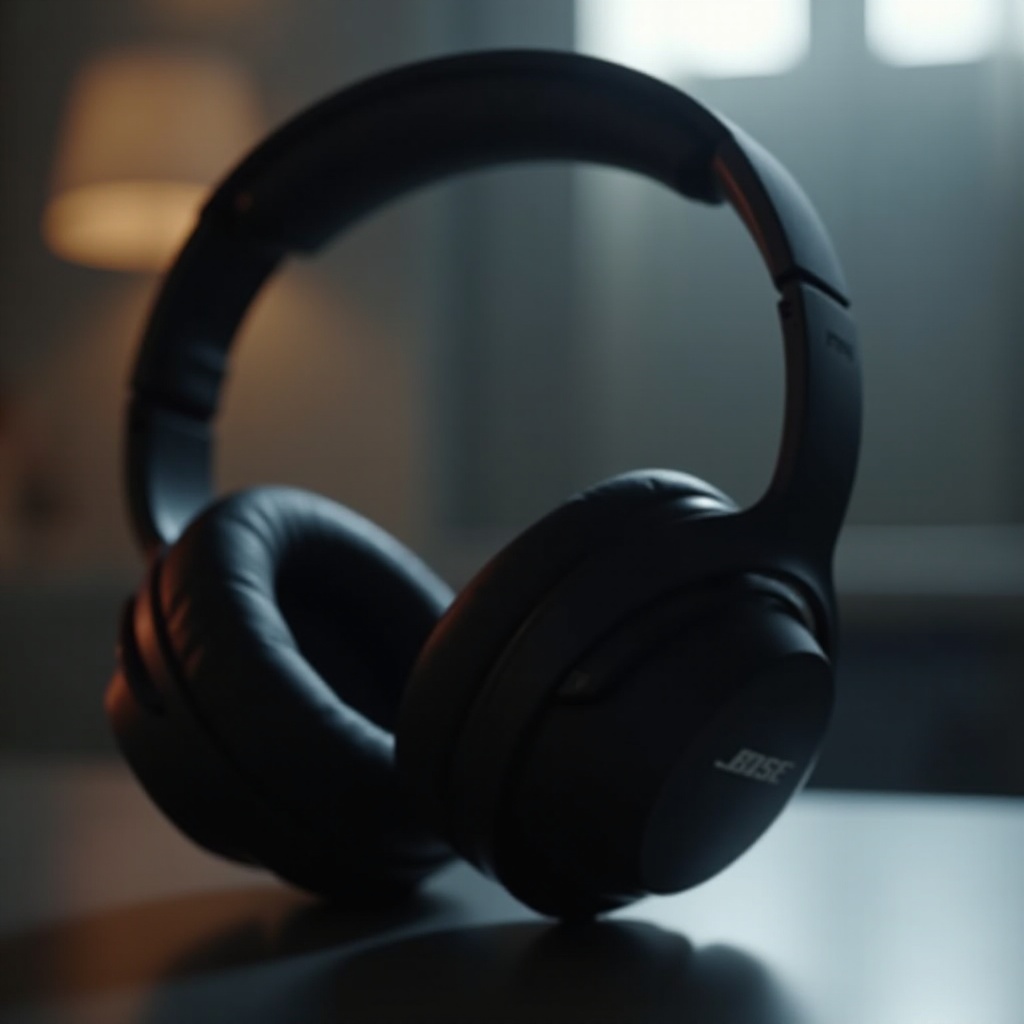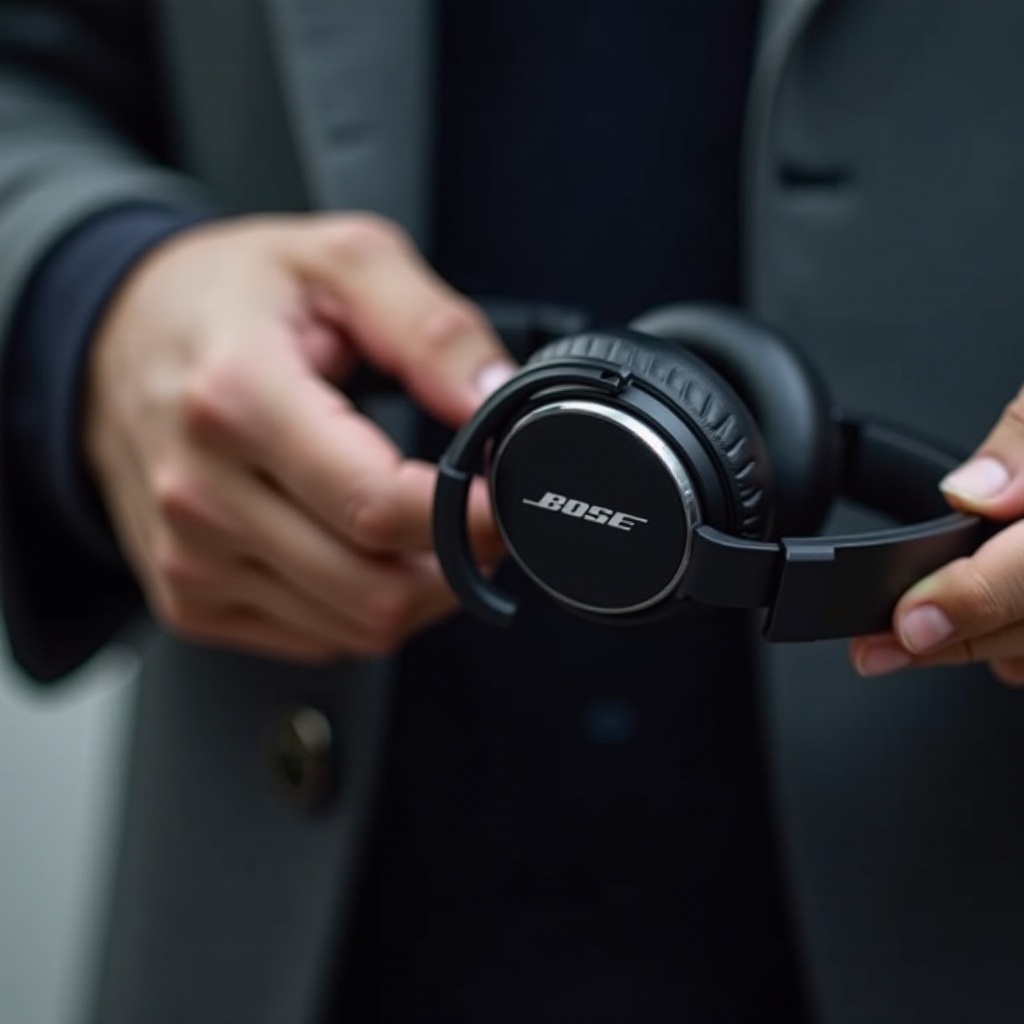
How to Put Bose Headphones in Pairing Mode: Troubleshooting?
On July 28,2025 by Tom RoutleyBose headphones offer exceptional audio quality and noise-cancellation features, making them a favorite among music enthusiasts and professionals alike. To maximize their potential, understanding How to Put Bose Headphones in Pairing Mode is essential. This guide will help you navigate the process smoothly and troubleshoot any connectivity issues that may arise. Whether you own a pair of QuietComfort headphones, the Noise Cancelling Headphones 700, or earbuds, this article provides comprehensive steps for pairing your device with various gadgets.

How to Put Bose Headphones in Pairing Mode
Engaging the pairing mode on your Bose headphones is crucial for connecting to different devices, such as smartphones, tablets, and computers. Whether you’re switching devices or setting up for the first time, understanding how to activate pairing mode will save you time and frustration. This process ensures smooth wireless functionality, enabling a seamless audio experience across all your electronics, whether at home, at work, or on the go.
Bose QuietComfort Series
To initiate pairing mode on the QuietComfort series, first switch on your headphones. Then, press and hold the power button until you hear a voice prompt indicating that the headphones are ready for pairing. This feature ensures that your QuietComfort headphones can easily connect to various Bluetooth-enabled devices. Be sure the headphones are within close range of the intended device and not already paired with another source to avoid connection issues.
Bose Noise Cancelling Headphones 700
For the 700 series, power them on and press the Bluetooth button on the left earcup until the Bluetooth indicator starts blinking. This blinking light confirms your headphones are in pairing mode and discoverable. Ensure the device you're pairing with has Bluetooth enabled. The 700 series supports multipoint connectivity, meaning you can connect to more than one device, making transitions between phone calls and media playback easier and faster.
Bose SoundLink and SoundSport Models
For SoundLink and SoundSport models, power them on. Then, press and hold the multifunction button on the headphones until you hear “Ready to pair.” This message is your confirmation that the headphones have entered pairing mode. These models are popular for workouts and travel, and pairing mode enables quick switching between devices like fitness trackers, smartwatches, and portable media players. Always keep firmware updated for the best experience.
Bose Earbuds (e.g., QuietComfort Earbuds)
For earbuds, tapping the Bluetooth button on the case until the light blinks blue signifies they are ready to pair. Make sure your earbuds are charged and seated properly in the charging case before beginning. This process enables a quick connection with your phone, tablet, or laptop. Pairing mode can also be used to troubleshoot disconnection problems by forcing a new connection with your desired device.
How to Connect Bose Headphones to Different Devices
Once the headphones are in pairing mode, connect them to various devices with these easy steps tailored for each system. Whether you are using a mobile device, computer, or a TV, Bose ensures compatibility through Bluetooth standards. Always make sure your device’s Bluetooth is enabled, and if possible, disconnect other devices that might interfere with the signal. The steps may vary slightly depending on software versions and manufacturers.
iPhone and iPad
Go to Settings > Bluetooth on your iOS device. Find your Bose headphones from the list and tap to connect. Once paired, your iPhone or iPad will remember the headphones for future use. This process is generally quick and supported by iOS features like audio sharing and seamless handoff, especially in newer models. If prompted for a PIN, try 0000 or 1234, which are common defaults for Bose devices.
Android Devices
On Android, open Settings, select Connections, turn on Bluetooth, and choose your Bose model from the available devices list. Pairing confirmation may appear as a pop-up. Depending on the manufacturer, you might see enhanced audio options, such as aptX support or device-specific codecs. It’s advisable to rename the paired device for easy identification if you use multiple Bluetooth accessories with your phone or tablet regularly.
Windows PCs
In Windows, open Settings, go to Devices > Bluetooth & other devices, and add your Bose headphones from the list to pair. A confirmation will appear when the connection is successful. Once connected, Windows usually routes system audio through the headphones automatically. You may need to choose your Bose device as the default playback option in Sound Settings if sound doesn’t route correctly the first time.
Mac Computers
On a Mac, click the Apple menu, select System Preferences > Bluetooth, and click “Connect” next to your Bose headphones. Ensure the headphones are in pairing mode before attempting. Once connected, macOS typically remembers the device for future use. If there are audio quality issues, check Sound settings and switch between “Headphones” and “Headset” profiles depending on whether you need stereo or microphone input.

TVs and Other Bluetooth Devices
For TVs and other devices, consult the Bluetooth settings, enable Bluetooth, and select your Bose headphones to establish a connection. Some TVs require external Bluetooth transmitters if they lack built-in support. Refer to your TV manual for compatibility. Once paired, audio will stream wirelessly, which is excellent for late-night viewing. Bose headphones often auto-connect to the last paired device, so a reset may be needed if switching sources.
Why Won’t My Bose Headphones Connect? (Troubleshooting Guide)
Even with the right steps, connection issues can arise due to software glitches or user error. It’s important to understand common pairing pitfalls and their solutions. These problems may include signal interference, outdated firmware, or device incompatibility. Don’t worry—there are several troubleshooting methods that can restore functionality. Let’s look into some practical and proven tips that can help restore your connection quickly and reliably.
Common Pairing Issues and Solutions
If headphones won’t connect, make sure they are in pairing mode and within range of the desired device. Ensure the device’s Bluetooth is activated and visible to new connections. Try removing previous pairings if connection fails. Turning the device off and then on again often helps. Additionally, check for firmware updates through the Bose app, which can address bugs and improve pairing speed and reliability.
Resetting Your Bose Headphones
To reset, turn off your headphones. Press and hold the power button for 10 seconds until you hear a prompt or see a flashing indicator. This simple reset can often resolve persistent connectivity issues. It clears temporary memory and restarts Bluetooth functionality. Refer to your model’s manual for any variation in the reset process. After resetting, you’ll need to re-pair your headphones with your devices.
Using the Bose Connect and Bose Music Apps
The Bose Connect and Bose Music apps offer step-by-step guidance and can update your device firmware, further enhancing connectivity. These apps also help manage paired devices and customize audio settings. Available for both iOS and Android, they serve as a convenient hub for managing your Bose gear. The apps even provide support content and warranty info, making them essential tools for every Bose owner.
How Do I Know If My Bose Headphones Are in Pairing Mode?
Identifying if headphones are in pairing mode is straightforward once you know what to look for. You’ll either see visual signals or hear voice prompts. Knowing these cues helps prevent accidental mispairing or time wasted during setup. Make sure you activate pairing mode correctly based on your headphone model before attempting to connect. Each model has its own indicators, which are covered below.
Visual Indicators
Look for a fast-blinking Bluetooth light as an immediate visual cue. This is usually located near the power or Bluetooth button and is designed to be easily seen. Some models also display this signal on the charging case. If the light remains solid, it typically means the headphones are already paired or idle. Refer to the user manual for model-specific LED behaviors and meanings.
Audio Prompts
Bose headphones often provide voice notifications, confirming they are ready to pair. These prompts may say “Ready to pair” or name the connected device once paired. Audio prompts are especially helpful for visually impaired users or during noisy environments. If you don’t hear anything, ensure the volume is up or try using the Bose app to troubleshoot. Some older models may use tones instead of full voice commands.
Conclusion
How to Put Bose Headphones in Pairing Mode is an essential skill that enhances your audio experience across different devices. It allows for seamless transitions and reliable performance in any setting. Mastering this process ensures you can switch between phones, computers, and other devices effortlessly, with minimal interruption. Troubleshooting common connectivity issues further ensures smooth operation and less downtime. Whether you're switching between devices or troubleshooting a stubborn connection, follow these instructions for effortless headphone management and an optimized listening experience every time.
FAQ
How many devices can I pair with my Bose headphones?
Bose headphones typically remember up to eight devices in their pairing list, allowing quick connections.
Can I use my Bose headphones while charging?
Yes! You can listen via cable while charging, though Bluetooth functionality is disabled during charging.
What should I do if my headphones keep disconnecting?
Ensure your headphones and device are nearby with minimal interference. A firmware update through the app may solve persistent disconnections.
Article Recommendations
Latest articles
Popular Articles
Archives
- July 2025
- May 2025
- November 2024
- October 2024
- September 2024
- August 2024
- July 2024
- June 2024
- May 2024
- April 2024
- March 2024
- February 2024
- January 2024
- December 2023
- November 2023
- October 2023
- September 2023
- August 2023
- July 2023
- June 2023
- May 2023
- April 2023
- March 2023
- February 2023
- January 2023
- December 2022
- November 2022
- October 2022
- September 2022
- August 2022
- July 2022
- June 2022
- May 2022
- April 2022
- March 2022
- February 2022
- January 2022
- December 2021
- November 2021
- October 2021
- September 2021
- August 2021
- July 2021
- January 2021
Leave a Reply